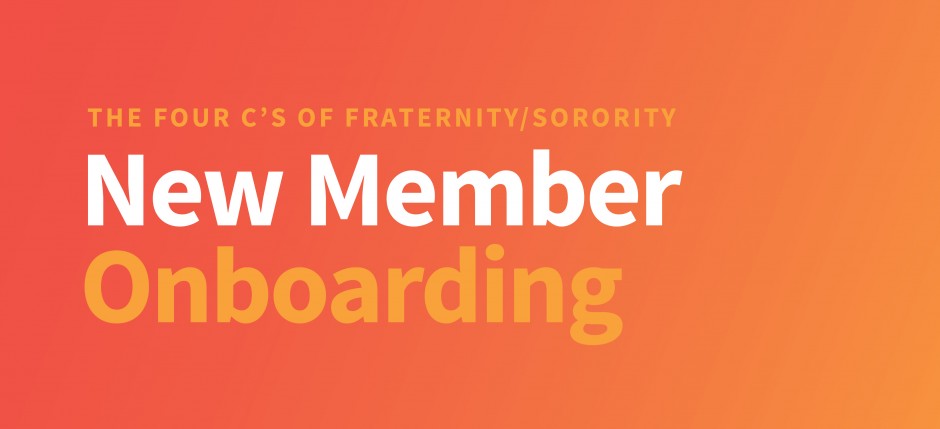The Four C’s of Fraternity/Sorority New Member Onboarding
by Matt Mattson
Before we get into this, let’s give credit where credit is due. This whole post is based off of concepts that the corporate human resources world uses to onboard new employees. That means that these ideas are both backed up by the “real world,” and it also serves as an important reminder that your experience as a fraternity/sorority member is preparing you for your career in ways you may not even realize.
First let’s look at onboarding directly through the lens of human resources professionals in the workplace
Onboarding has four distinct levels, the Four C’s:
Compliance is the lowest level and includes teaching employees basic legal and policy-related rules and regulations.
Clarification refers to ensuring that employees understand their new jobs and all related expectations.
Culture is a broad category that includes providing employees with a sense of organizational norms — both formal and informal.
Connection refers to the vital interpersonal relationships and information networks that new employees must establish.
It’s probably pretty obvious how this can directly apply to fraternity/sorority life. Let me make a couple of important connections for each “C.”
Compliance. Do your newest members know the rules? Do they know what’s OK and what’s definitely not OK? Have you explicitly laid out not only the official policies, but also the “unwritten” rules along with the “why” of those rules as well as the consequences? Think about Social rules. Attendance rules. Financial rules. Paperwork rules. Academic rules. University rules, Council rules, Headquarters rules, and Chapter rules. Make a single document that outlines all of these things and review it weekly with your newest members. New members are the biggest threat to a chapter’s existence and to the safety of other members and guests… not because they’re bad or anything… because they often don’t really understand the rules they’re expected to follow.
Clarification. Do your newest members know the opportunities they have to participate and truly matter in the life of the chapter? Can they shadow older members and leaders? Can they meet with leaders of other groups and campus professionals? Could you create opportunities for new members to design their own experience to help create the fraternity/sorority experience they crave?
Culture. How do members treat each other? How do members talk to one another and to folks outside the organization. How do members hold one another accountable? Culture is not often taught well in the classroom. It is felt. It is passed down from member to member. It can also be reset if a group of new members commits to changing the way they communicate with and treat members of the organization.
Connection. Are each of your new members connected to a friendship group (a sub-group of members that they feel close with)? Are their “sisterhood”/”brotherhood” experiences created through genuine connection and natural, meaningful, real conversations or just through large group events? Fraternity and sorority is a relationship business, yet too many chapters often fail to intentionally foster healthy and productive relationships.
As someone who cares about educating and onboarding new members, consider these “Four C’s” when designing your experience.
*For more information on the source of these “Four C’s,” click here and see page 2. Talya Bauer created this excellent resource.

